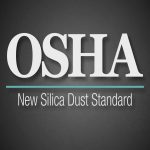Training Requirements

We pride ourselves in maintaining a qualified and capable staff with a relentless pursuit of excellence to better meet your needs. All of our employees are required to have the correct certifications to safely execute their duties.
-Superintendents: OSHA 30-hr, -CPR/First Aid
-Foreman: OSHA 30-hr, CPR/First Aid
-Safety Management: OSHA 500-hr, CPR/First Aid
-Forklift Operators: Certified (100+ hours)
-Scaffold Erectors: Certified Competent Erectors
Our Safety Approach
A behavior-based safety process focused on changing worker behaviors and promoting safe actions through training, observation and feedback.
A safety accountability process, including a safety violation enforcement program.
Safety Commitment
DMG is dedicated to protecting the safety and health of its employees.
We have established a safety and health program to prevent injuries and illnesses due to work place hazards. Employee involvement at all levels of the Company is critical for us to be successful in this effort. We firmly believe that a safe work place is the key to a quality and productive work environment.
DMG believes in order to fulfill its commitment to safety, safety training from top to bottom is essential. All DMG employees are fall protection certified, scaffold trained and have received harard communication training.
Work Hazard Assessments
 Industrial Hygiene Program
Industrial Hygiene Program
DMG Masonry is proud to have an industrial hygiene program in place and routinely conducts air monitoring and noise dosimetry. Our supervisors conduct Job Hazard Analyses prior to job start up and foremen conduct daily work-site safety inspections. Our Superintendents and Safety Director conduct weekly work-site safety audits.
New OSHA Crystalline Silica Rule
DMG has developed and implemented an exposure control plan in response to the new OSHA Crystalline Silica Rule for Construction. To help protect an estimated two million workers that are exposed to silica hazards each year, OSHA’s new standards went into effect for the construction industry on September 23, 2017.
OSHA’s Crystalline Silica Rule: Fact Sheet


OSHA Silica Updates
The new standard reduces the permissible exposure limit (PEL) for respirable crystalline silica to 50 micrograms per cubic meter of air, averaged over an 8-hour work shift.
Employers are required to use engineering controls (water attachments, ventilation, etc.) to limit worker exposure to the permissible exposure limit.
Employers must develop and implement a written exposure control plan.
Employers must now provide medical exams to monitor highly exposed workers.
Records must be maintained, available and include objective data, medical surveillance, and training records.
